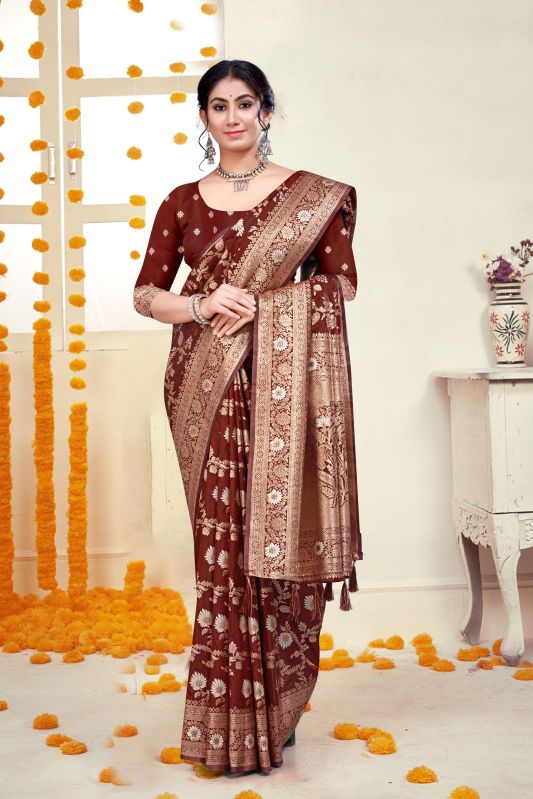Company Information
Ask for more detail from the seller
Contact SupplierSilk Fabric: Silk sarees are made from silk, a natural fiber produced by silkworms. Silk is known for its luxurious feel, sheen, and smooth texture. Various types of silk are used to create sarees, including Banarasi silk, Kanjeevaram silk, Tussar silk, and more.
Rapier Weaving Technique: Rapier weaving is a modern weaving technique that uses a rapier or a rod to insert the weft thread through the shed (an opening between the warp threads). This method is known for its speed and efficiency, allowing for the creation of intricate patterns and designs.
Designs and Patterns: Silk sarees are known for their elaborate designs, intricate weaving, and vibrant colors. The patterns on a silk saree can include traditional motifs, floral designs, geometric patterns, or religious symbols. The pallu (the loose end of the saree draped over the shoulder) and borders are often embellished with intricate embroidery or zari work (metallic thread).
Types of Silk Sarees: Different regions in India are known for producing distinct types of silk sarees. For example, Banarasi silk sarees are from Varanasi and are characterized by their opulent gold and silver brocade work. Kanjeevaram silk sarees from Tamil Nadu are known for their bright colors and heavy silk fabric.
Occasions: Silk sarees are often chosen for special occasions such as weddings, festivals, and formal events. The richness of silk, coupled with intricate designs, makes them a symbol of elegance and tradition.
Accessories: Silk sarees are typically paired with traditional accessories, including gold or silver jewelry, bangles, and a matching blouse. The choice of accessories may vary based on the occasion and personal preferences.







